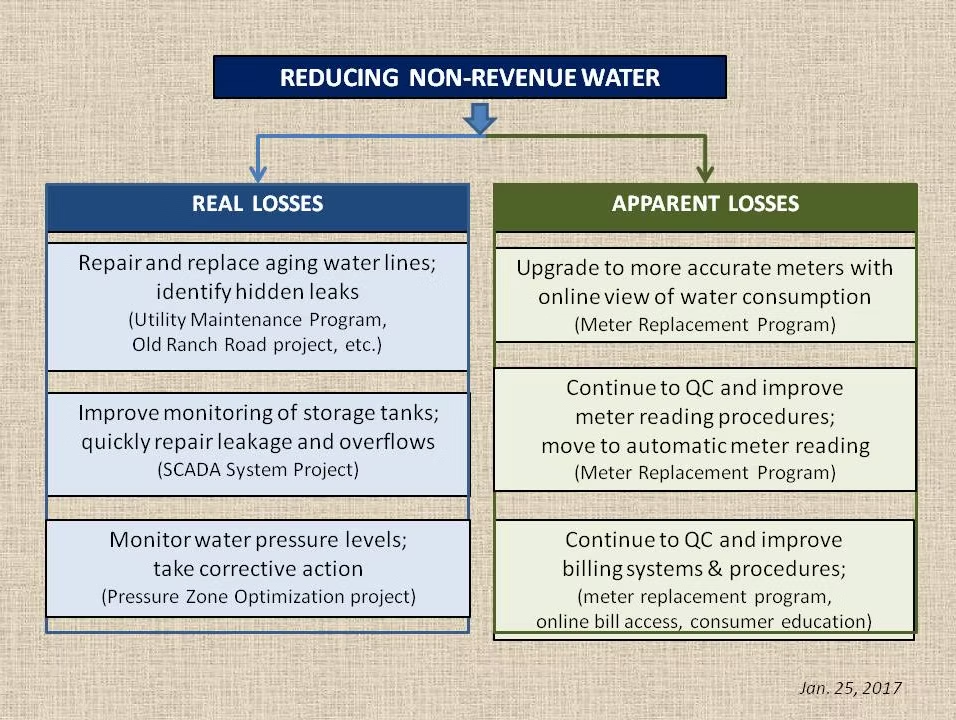Water Loss
NON-REVENUE WATER
The American Water Works Association (AWWA) recommends that water utilities use the term “Non-Revenue Water” (or NRW) to describe “unaccounted-for water.”
This chart shows some of the projects EAWSD has underway to reduce unaccounted-for water.

In the EAWSD Board meeting every month, the Board reviews the current “unaccounted-for water” report.
The level for our District typically ranges from between 6% and 11%.
This is sometimes interpreted as the District’s “water loss” -- but water loss is only one component of the unaccounted-for-water. For example, discrepancies between the accuracy of meters that measure well production and customer meters that measure billed water use may show an apparent loss that does not reflect the loss of any actual water. In addition, water that is taken from EAWSD fire hydrants for hydrant flushing (an annual maintenance operation), for filling tankers for fire fighter training, and for actual firefighting is not metered. This water is not “lost” and, while EAWSD attempts to estimate these uses, there may be discrepancies between the estimates and actual use.
[Note: The use of fire hydrants is restricted: please see the section on “hydrant meter rentals," on the Developer & New Home Construction page.
If you see someone taking water from a hydrant without authorization, please contact the District office:
505-466-1085.
Although it is not a strict measure of “water loss,” the “unaccounted-for water” report does identify important trends over time. EAWSD takes this seriously, working in many ways to reduce our “unaccounted-for-water” (or Non-Revenue Water) level.
American Water Works Association NRW Benchmarking
Non-Revenue water (NRW) has the following components:
- Unbilled authorized consumption (such as fire-fighting, flushing pumps for maintenance, etc.)
- Apparent losses (metering inaccuracies, etc.)
- Real losses (from transmission mains, storage facilities, distribution mains or service connections)
The American Water Works Association (AWWA) now recommends that water utilities use the term “Non-Revenue Water” (or NRW). This NRW indicator is actually the “unaccounted-for water” that we report, since the NRW includes authorized unbilled consumption. The AWWA provides valuable guidance for tracking, auditing, and controlling non-revenue water.
While we may hear of AWWA “water loss levels” of 10%, we must realize that this is a benchmark indicator, not a national average. Furthermore, using the NRW index to compare water losses across utilities has been criticized as flawed[1] -- real losses depend to some extent on factors largely outside the control of the utility, such as topography, length of network per connection, age of the infrastructure, and water use per capita.
Benchmarks such as these are useful, not as specific mandates, but rather as reference points. They provide even more information when we look inside to review the components that were considered important in setting the benchmark.
[1] A.O. Lambert and Dr R.D. McKenzie:Practical Experience in using the Infrastructure Leakage Index, International Water Association Conference ‘Leakage Management: A Practical Approach’, Lemesos, Cyprus, November 2002, accessed on November 8, 2009

